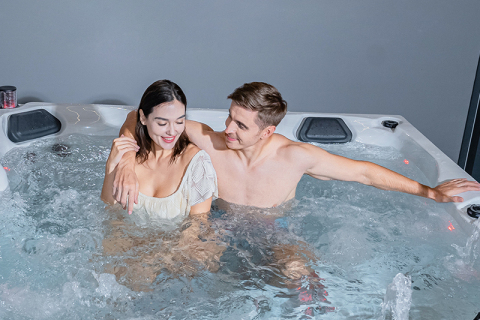
- Home
- >
News
Although there is a possibility of virus transmission, it does not mean that it will definitely spread in large quantities in the water. In fact, the risk of herpes transmission in an outdoor whirlpool hot tub is not high. The key is whether there is an opportunity for direct contact with an infected person.
during the rainy season or when leaves fall a lot, covering the whirlpool spa hot tub can effectively prevent water contamination. In the dryer climate and warmer seasons, if the tub is not used for a long time, keeping the lid open can help ventilate and prevent bacteria from growing.
if an exterior hot tub is equipped with a 3-horsepower pump, the pump can support up to 10-12 spa jets, and each jet can provide enough water flow for a moderate intensity massage. For those who want a strong spa effect, a 4-5 horsepower pump can be selected. Such a system can not only support more jets, but also provide a stronger massage effect.
Although salt water can help improve skin problems, it may cause mild irritation for some people with sensitive skin, especially those who are allergic to salt ingredients. In addition, high concentrations of salt water may make the skin feel dry, which may not be friendly to some people.
A hot tub spa cover lifter is a mechanical device used to assist in opening and closing a hot tub spa cover. Generally speaking, hot tub spa covers are made of heavy foam materials to ensure good insulation and safety. This makes the weight of the cover sometimes reach tens of kilograms, especially when it is wet, the weight of the cover will increase further.
Large freestanding hot tubs Large freestanding spa bathtubs are suitable for families with spacious bathrooms who want the ultimate in comfort and relaxation. Large freestanding spa bathtubs are typically 70 to 75 inches long, 32 to 40 inches wide, and 28 to 36 inches high.
If the outdoor whirlpool hot tub water itself contains a large amount of minerals, especially alkaline substances such as calcium carbonate, the use of ozone may accelerate the precipitation reaction of these minerals, resulting in an increase in pH.
After a day of work and life pressure, the night is the time for most people to relax. The outdoor hot tub itself can help relax muscles and soothe tense nerves through hot water and massage functions, and the quietness and privacy of the night make this relaxation effect more significant.
Hot tub shock treatment is characterized by rapidity and efficiency, and is usually carried out when there are signs of deterioration in water quality. Even users who use chemical disinfectants (such as chlorine or bromine) or are equipped with ozone generators on a daily basis need to perform shock treatment regularly.
While hot tub massage jets are designed to run for long periods of time, they are not usually designed to work around the clock. Long-term operation will cause greater loads on the pump, motor, and filtration system, so leaving it on overnight may affect the life of the device.
Heating efficiency is one of the most important factors that users are concerned about when heating a hot tub. When the jet is running, it can indeed help to distribute heat more evenly in the water by accelerating the water flow and promoting water agitation.
A hot tub without a cover will lose a lot of heat, and the heating system will have to start more frequently to maintain the water temperature. Even if the cover is not used for only a short interval, the heat loss is still significant. For those who want to save money on their electricity bills, always using a hot tub cover is a simple and effective energy saving measure.












